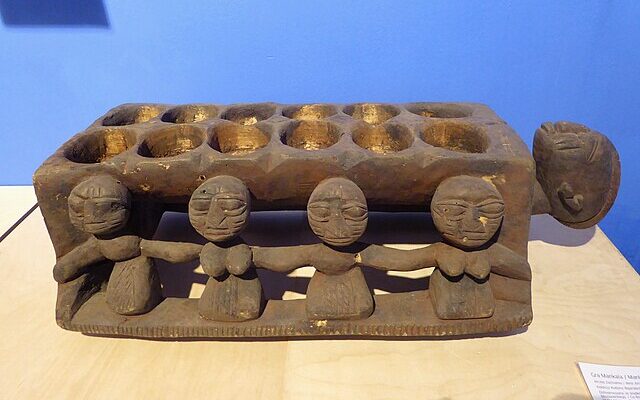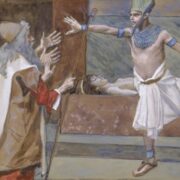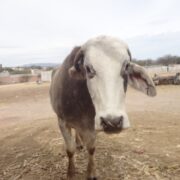
During her fieldwork in Kenya last summer, Yale archaeologist Veronica Waweru learned that tourists had begun stealing hand axes from a site within the Lewa Wildlife Conservancy. To address this issue, Waweru contacted the conservancy and organized a tour to investigate the matter.
That’s when she discovered something even more fascinating.
Smithsonian Magazine writes that what else she found during her visit took her by surprise.
Another site caught her eye during her visit: rows of shallow pits carved into a nearby rock ledge. Waweru thinks the pits were game boards once used for mancala, a family of two-player strategy games.
“It’s a valley full of these game boards, like an ancient arcade,” says Waweru in the statement. “Given the erosion of some of the boards, I believe people were playing these games there a very long time ago.”
Mancala is a family of games all played with a similar set-up: Players move tokens, like beads or seeds, across rows of shallow holes. (The name “mancala” comes from the Arabic word naqala, which means “to move.”) These games are thousands of years old, with “examples of mancala-like rows of holes appearing at archaeological sites across Africa, the Middle East and southern Asia,” as Smithsonian magazine’s Meilan Solly wrote in 2020. Today, mancala is still played all over the world.
Who used the game boards? Their location may offer a clue: The site—situated near the equator, on the eastern side of Africa’s Great Rift Valley—occupies a low-lying basin surrounded by highlands, per the statement. Water regularly flows into the area from the surrounding elevation. Waweru thinks herding societies could have resided in the area up to 5,000 years ago, with the basin’s water drawing in “very early human ancestors.”
Mancala is a traditional and ancient board game that has been played for centuries across various cultures and regions. The game typically consists of a wooden or stone board with a series of small pits or hollows, arranged in two rows. Each player starts with a certain number of seeds or stones, and the objective is to sow and capture seeds in order to accumulate more than the opponent.
The game is known by different names and variations in different parts of the world, reflecting its widespread popularity and adaptability. It not only serves as a source of entertainment but also holds cultural and social significance, often played as a means of socializing, strategizing, and passing down traditions from one generation to the next.
The tradition at this site may have been passed down for thousands of years.
“Scholars tentatively ascribe the game’s origin to Africa, though it was popular in ancient Asia too. Archaeologists reported a set in the floor of a Neolithic house in ‘Ain Ghazal, Jordan, from almost 8,000 years ago. Like the boards in Kenya, the Jordanian board was carved into stone and featured two rows of pits. The ancient trading city of Petra also featured mancala, which the Jordan Times claims was played using special rules.
And now we have these ancient sets of cupules that seem to have served for the game, carved into the rock a few hundred meters from an ancient burial complex. There may be more than 20 sets, Waweru says, but they can’t be seen anymore. They’re like a gaming arcade, but next door to a funeral home.
The neighboring burial complex contains at least 19 cairns that have not been excavated yet, she says; their visit was two days and they didn’t have time to explore further. They haven’t confirmed that people were buried inside, but that’s what was found in similar mounds in the region,” Waweru explained to Haaretz.









